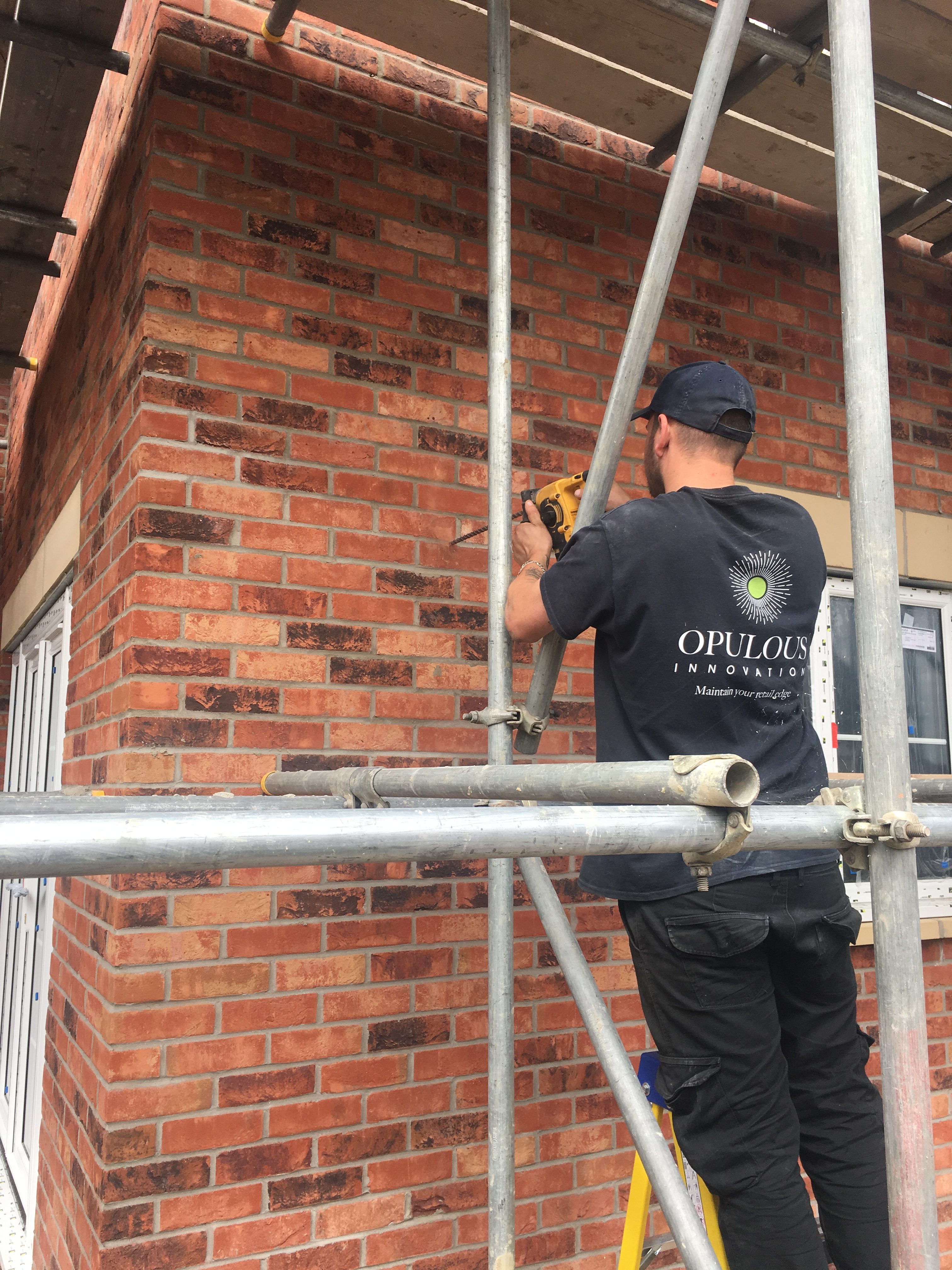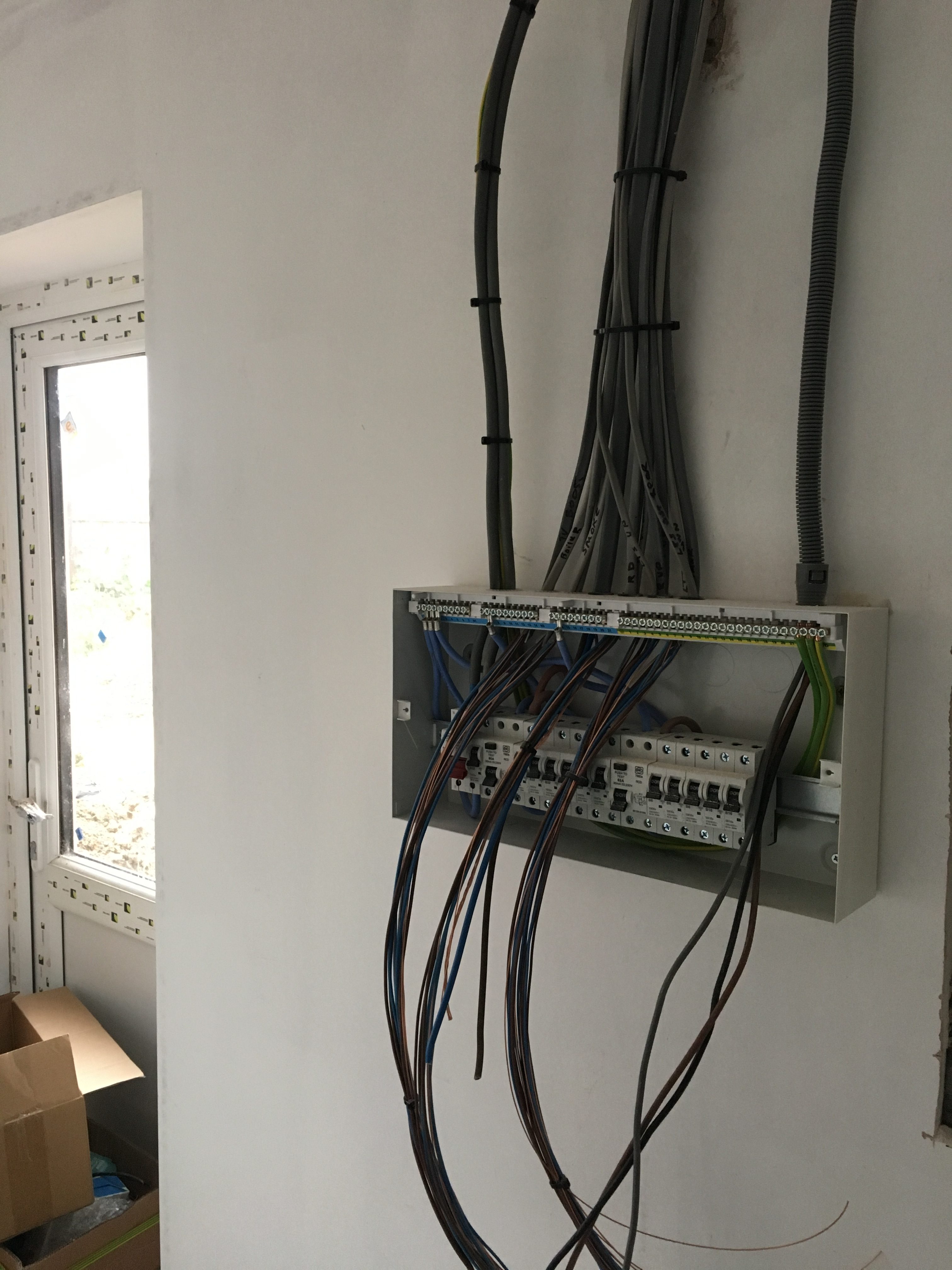Buying a new house can be a daunting task on its own, but then working out whether your new home requires a rewire, and a visit from a local electrician, is not always easy to spot. Cabling in homes has changed significantly over the past decades, from cable colour to consumer units, so there’s a lot to keep up with. We’ve put together this simple guide to break down some of the myths about rewiring and to help you spot some of the tell-talesigns that a rewire might be needed.
Establishing your home’s age and the last time any electrical work was carried out, is the first step to working out whether the wiring is safe and good quality. If you’re buying a property more than 25 years old, it’s definitely a good idea to contact a residential electrician to carry out maintenance tests on the wiring and consumer unit.
Essentially, many houses built and wired pre-1984 do not have any earth cabling and some were installed using aluminium cable instead of copper. The lack of earth connection can be a safety issue as it stops any electric shocks should any piece of equipment get an overload of power. The use of aluminium cable can also be more likely to cause fires than copper cable, because of its hotter operating current. And although the consumer unit may have an installation date on it, the wiring itself may predate the board.
Do you need an electrician?
There are a few warning signs that might indicate that a rewire needs to be carried out and that you should call in an electrician:
-
If the consumer unit has a wooden backing, cast iron switches, a black electric cable or nolabelling.
-
Are there out of date or mismatched sockets: broken or cracked sockets or rounded entries instead of standard 3 pin?
-
Are the fuses tripping repeatedly?
-
Can you see a mixture of cable colours?
-
Do you know, or can spot, if you have any aluminium wiring?
-
The absence of an earth cable.
-
Flickering or dimming lights that appear to need to be replaced more than normal
If you buy a property younger than 25 years old and don’t plan on making any alterations or additions, you probably won’t need a complete rewire. As long as the wiring in the property meets the regulations from the year it was installed and hasn’t been damaged or alteredsince you can escape having to change it. A rewire is only required in these circumstances when the wiring in place might be a danger or is unable to cope with the demands of modern living. One thing you might want to consider (as everything from smartphones to watches requires charging) is that any property with only one plug socket per room definitely won’t be up to scratch for your needs.

Additions and alterations
If you’re planning on carrying out a major remodel of your home or wish to install additional sockets this constitutes a ‘material alteration’, this include electric car chargers. Any material alteration comes under Building Regulations that require a rewire of part, if not all, of your home including your consumer unit.
Carrying out an extension or a loft conversion is classed as an ‘addition’, so all new wiring in the addition will have to conform to Part P electrical safety. All existing wiring will have to be improved to ensure it can carry additional loads and meet the energy efficiency requirements set by Building Regulations . It will also have to meet current earthing requirements and have sufficient cross bonding. If you’re planning to carry out any additions to your home it’s a good idea to have your existing system tested before the architect produces the electrical plans.

Getting quotes from an electrician for a rewire at home
If your property does require a rewire there a few factors to take into account when receiving quotes.
-
Whether you will stay at home or move out for the works
-
How many bedrooms you have
-
The overall size of your home
-
The age of the home
-
Location and accessibility of the project
-
The finish you want on your sockets and lights
-
Any additional requests
-
The quality of the contractor (cheap is not always better!)
A full rewire requires all electrical cabling and the consumer unit to be replaced; this usually takes about 2-4 weeks, depending on how big your home is. If a surface mount rewire is being carried out, all cables will be run in plastic conduit and will be visible. For a more discreet installation, the cables will be buried in the floors and walls. Whilst this most certainly looks the best, it means your electrician will have to lift your floorboards and create holes in the walls of your home to be able to install the cabling. This requires ‘making good’ either by your electrician or a plasterer and/or decorator to cover up any holes or surface damage, so make sure this aspect is included in the quote.

Our advice is always to get a reliable electrician into date and test your wiring. They can then give you an accurate report and recommend any changes that need to be made, in most cases avoiding the expense of a whole rewire. Finding an electrician can be difficult if you have never used one in your location before. When approaching electricians for quotes don’t be afraid to ask for the following: references, registration, qualifications, accreditation andinsurance. If your electrician is fully qualified and reliable they will have no issue supplying you with this information. Although most people tend to rely on word of mouth when hiring an electrician, it doesn’t mean that they are accredited or qualified. Be careful and don’t be afraid to ask for letters of satisfaction from previous customers, or even pictures to demonstrate the quality of their workmanship. If your electrician is fully qualified and reliable they will have no issue supplying you with all of this information and will actually be pleased that you asked.

